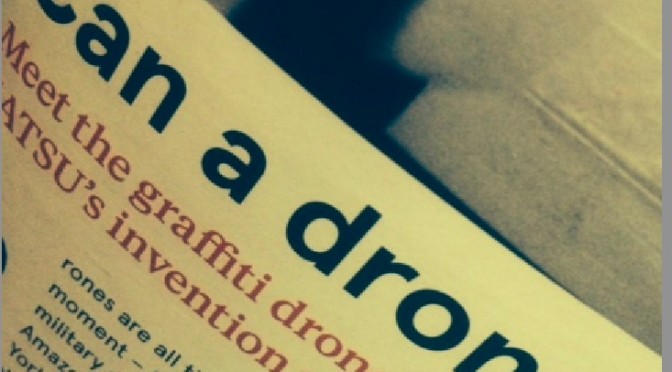This wraps up my series of thoughts on ‘Building Public Trust’ since the NIB Bristol meeting on July 24th.
It has looked at how to stop chasing public trust and instead the need to become organisations that can be trustworthy [part 1]. What behaviours make an organisation trustworthy [part 2]. Why fixing the Type 2 opt out is a vital first step [part 3], and why being blinded by ‘the benefits’ is not the answer [part 4], but giving balanced and fair explanations of programme purposes, commissioning and research, is beneficial to communicate.
So I want to wrap up by suggesting how communications can be improved in content and delivery. Some ideas will challenge the current approach.
Here in part five: Future solutions, I suggest why aiming to “Build Public Trust” through a new communications approach may work better for the public than the past. I’ll propose communications on care.data:
- Review content: what would ethical, accurate content look like
- Strengthen relationships for delivery: don’t attempt to rebuild trust where there is now none, but strengthen the channels that are already viewed by the public to be trustworthy
- Rethink why you communicate and the plan for when: All communications need delivered through a conversation with real listening and action based upon it. Equal priority must be given to both a communications plan for today and for the future. It must set out a mechanism for future change communications now, before the pathfinders begin
- Since writing this, the Leeds area CCGs have released their ‘data sharing’ comms leaflet. I have reviewed this in detail and give my opinions as a case study.
NIB workstream 4, underpins the NHS digital future, and aims to build and sustain public trust, delivering plans for consent based information sharing and assurance of safeguards. It focuses on 4 areas: governance and oversight, project risks, consent and genomics:
“The work will begin in 2015 and is expected to include deliberative groups to discuss complex issues and engagement events, as well as use of existing organisations and ways to listen. There will also be a need to listen to professional audiences.” [NIB work stream 4] [ref 1]
Today’s starting point in trust, trust that enables two-way communication, could hardly be worse, with professionals and public audiences. Communications are packaged in mistrust:
“Relations between the doctors’ union and Health Secretary Jeremy Hunt hit a new low following his announcement in July that he was prepared to impose seven-day working on hospital doctors in England.” [BBC news, Aug 15, 2015]
There appears to be divided opinion between politicians and civil servants.
Right now, the Department of Health seems to be sabotaging its own plans for success at every turn.
What reason can there be for denying debate in the public domain of the very plans it says are the life blood of the savings central to the NHS future?
Has the Department learned nothing from the loss of public and professional trust in 2014?
And as regards the public in engagement work, Hetan Shah, executive director of the Royal Statistical Society said in 2014, “Our research shows a “data trust deficit”. In this data rich world, companies and government have to earn citizens’ trust in how they manage and use data – and those that get it wrong will pay the price.’ [RSS Data Trust Deficit, lessons for policymakers, 2014] [2]
Where do the NIB work stream discussions want to reach by 2020?
“The emergence of genomics requires a conversation about what kind of consent is appropriate by 2020. The work stream will investigate a strand of work to be led by an ethicist.” [NIB work stream 4]
Why is genomics here in workstream 4, when datasharing for genomics is with active consent from volunteers? Why will a strand of work be led by an ethicist for this, and not other work strands? Is there a gap in how their consent is managed today or in how consent is to be handled for genomics for the future? It seems to me there is a gap in what is planned and what the public is being told here. It is high time for an overdue public debate on what future today’s population-wide data sharing programme is building. Good communication must ensure there are no surprises.
The words I underlined from the work stream 4 paper, highlight the importance of communication; to listen and to have a conversation. Despite all the engagement work of 2014 I feel that is still to happen. As one participant summed up later, “They seem hell bent on going ahead. I know they listened, but what did they hear?” [3]
care.data pathfinder practices are apparently ready to roll out communications materials: “Extraction is likely to take place between September and November depending on how fair processing testing communications was conducted” [Blackburn and Darwen HW]
So what will patient facing materials look like in content? How will they be rolled out?
Are pathfinder communications more robust than 2014 materials?
I hope the creatives will also think carefully, what is the intent of communications to be delivered. Is it to fully and ethically inform patients about their choice whether to accept or opt out from changes in their data access, management, use and oversight? Or is the programme guidance to minimise the opt out numbers?
The participants are not signing up to a one time, single use marketing campaign, but to a lifetime of data use by third parties. Third parties who remain in role and purposes, loosely defined.
It is important when balancing this decision not to forget that data that is available and not used wisely could fail to mitigate risk; for example in identifying pharmaceutical harms.
At the same time to collect all data for all purposes under that ‘patient safety and quality’ umbrella theme is simplistic, and lends itself in some ways, to lazy communications.
Patients must also feel free and able to make an informed decision without coercion, that includes not making opting out feel guilty.
The wording used in the past was weighted towards the organisation’s preference. The very concept of “data sharing” is weighted positively towards the organisation. Even though in reality the default is for data to be taken by the organisation, not donated by the citizen. In other areas of life, this is recognised as an unwilling position for the citizen to be in.
At the moment I feel that the scope of purposes both today and future are not clearly defined enough in communications or plans for me personally to be able to trust them. Withholding information about how digital plans will fit into the broader NHS landscape and what data sharing will mean beyond 2020 appears rightly or wrongly, suspicious. Department of Health, what are you thinking?
What the organisation says it will do, it must do and be seen to do, to be demonstrably trustworthy.
This workstream carries two important strands of governance and oversight which now need to be seen to happen. Implementing the statutory footing of the National Data Guardian, which has been talked about since October 2014 and ‘at the earliest opportunity’ seems to have been rather long in coming, and ‘a whole system’ that respects patient choice. What will this look like and how will it take into account the granular level of choices asked for at care.data listening events through 2014?
“By April 2016 NIB will publish, in partnership with civil society and patient leaders, a roadmap for moving to a whole-system, consent-based approach, which respects citizens’ preferences and objections about how their personal and confidential data is used, with the goal of implementing that approach by December 2020.”
‘By December 2020’ is still some time away, yet the pathfinders for care.data rolls on now regardless. The proof that will demonstrate what was said about data use actually is what happens to data, that what is communicated is trustworthy, is part of a system that can communicate this by recording and sharing consent decisions, “and can provide information on the use to which an individual’s data has been put. Over the longer term, digital solutions will be developed that automate as far as possible these processes.”
Until then what will underpin trust to show that what is communicated is done, in the short term?
Future proofing Communications must start now
Since 2013 the NHS England care.data approach appeared to want a quick data grab without long term future-proofed plans. Like the hook-up app approach to dating.
To enable the NIB 2020 plans and beyond, to safeguard research in the public interest, all communications must shape a trusted long term relationship.
To ensure public trust, communications content and delivery can only come after changes. Which is again why focusing only on communicate the benefits without discussing balance of risk does not work. That’s what 2014 patient facing communications tried.
In 2014 there were challenges on communications that were asked but not answered, on reaching those who are digitally excluded, on reaching those for whom reading text was a challenge, and deciding who the target audience will be, considering people with delegated authority young and old, as well as those who go in and out of GP care throughout their lives, such as some military. Has that changed?
In February 2014 Health Select Committee member Sarah Wollaston, now Chair, said: “There are very serious underlying problems here that need to be addressed.”
If you change nothing, you can expect nothing to change in public and professional feeling about the programme. Communications cannot in 2015 simply revamp the layout and pacakging. There must be a change in content and in the support given in its delivery. Change means that you need to stop doing some things and start doing others.
In summary for future communications to support trust, I suggest:
1. STOP: delivering content that is biased towards what the organsation wants to achieve often with a focus on fair processing requirement, under a coercive veil of patient safety and research
START: communicating with an entirely ethical based approach reconsidering all patient data held at HSCIC and whether omission of ‘commercial use’, balanced risks as identified in the privacy impact assessment and stating ‘your name is not included’ is right.
2. STOP: Consider all the releases of health data held by HSCIC again and decide for each type if they are going to deliver public confidence that your organisations are trustworthy.
START: communicate publicly which commercial companies, re-users and back office would no longer be legally eligible to receive data and why. Demonstrate organisations who received data in the past that will not in future.
3. STOP: the Department of Health and NHS England must stop undermining trust in its own leadership, through public communications that voice opposition to medical professional bodies. Doctors are trusted much more than politicians.
START: strengthen the public-GP relationship that is already well trusted. Strengthen the GP position that will in turn support the organisational-trust-chain that you need to sustain public support.
4. STOP: stop delaying the legislative changes needed on Data Guardian and penalties for data misuse
START: implement them and clearly explain them in Parliament and press
5. STOP: don’t rush through short term short-cuts to get ‘some’ data but ignore the listening from the public that asked for choice.
START: design a thorough granular consent model fit for the 21stC and beyond and explain to the public what it will offer, the buy in for bona fide research will be much greater (be prepared to define ‘research’!
6. STOP: saying that future practices have been changed and that security and uses are now more trustworthy than in the past. Don’t rush to extract data until you can prove you are trustworthy.
START: Demonstrate in future who receives data to individuals through a data use report. Who future users are in practice can only be shown through a demonstrable tool to see your word can be relied upon in practice. This will I am convinced, lower the opt out rate.
7. STOP: rolling out the current communications approach without any public position on what changes will mean they are notified before a new purpose and user in future of our data
START: design a thorough change communications model fit for the 21stC and beyond and tell the public in THIS round of communications what changes of user or purposes will trigger a notification to enable them to opt out in future BEFORE a future change i.e. in a fictional future – if the government decided that the population wide database should be further commercialised ‘for the purposes of health’, linked to the NHSBT blood donor registry and sold to genomic research companies, how would I as a donor be told, BEFORE the event?
There are still unknowns in content and future scope that mean communications are difficult. If you don’t know what you’re saying how to say it is hard. But what is certain is that there are future changes in the programme planned, and how to communicate these these with the public and professionals must be designed for now, so that what we are signed up for today, stays what we signed up for.
Delivering messages about data sharing and the broader NHS, the DH/NHS England should consider carefully their relationships and behaviours, all communication becomes relevant to trust.
Solutions cannot only be thought of in terms tools, not of what can be imposed on people, but of what can be achieved with people.
That’s people from the public and professionals and the programme working with the same understanding of the plans together, in a trusted long term relationship.
For more detail including my case study comments on the Leeds area CCGs comms leaflet, continue reading below.
Thanks for sharing in discussions of ideas in my five part post on Building public trust – a New Approach. Comments welcome.
Continue reading Building Public Trust [5]: Future solutions for health data sharing in care.data

![Building Public Trust [5]: Future solutions for health data sharing in care.data](https://jenpersson.com/wp-content/uploads/2014/04/caredatatimeline-637x372.jpg)

![Building Public Trust in care.data sharing [1]: Seven step summary to a new approach](https://jenpersson.com/wp-content/uploads/2015/07/edison1-672x372.jpg)





